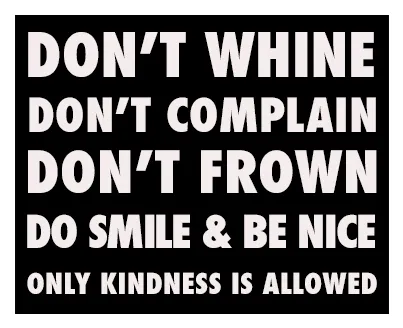In my previous post, I entertained the fantasy of turning the tables on service by telling customers how those who serve them ought to be treated. While posting a sign like the one above may be tempting, we need to find more subtle ways to guide service interactions in positive directions. One is for service providers to lead by example, and another is to let “good” customers know how much we appreciate their collaborative approach.

While simple enough in theory, those on the frontlines of service are often seriously tested by difficult situations. The challenge for management is hiring, training and inspiring their staff to optimize each encounter for the betterment of all concerned. Here are just a few tips from The Art & Science of the Hotel Concierge.
Hiring: When sitting down with job candidates, have a list of strategic interview questions that reveal not only their knowledge, but also their attitudes. While skill sets are important, they can typically be taught. Attitude, on the other hand, is more inherent and not as easily instilled. Here are just a few questions that can reveal the character of candidates:
- What motivates you?
- What irritates you, and how do you handle it?
- What’s the most difficult experience you’ve ever encountered and how did you resolve it?
- What’s the best service experiences you’ve ever had and why?
Training: While imparting skill sets is an integral part of training, positive attitudes can be reinforced while aptitudes are being developed. Role-play exercises are powerful tools for simultaneously reinforcing attitudes and behaviors. Having new hires “shadow” your best team members also provides good role modeling.
Inspiring and Reinforcing: Employee reward/incentive programs are great, but need to be accompanied by regular and consistent two-way communications to ensure expectations are understood. Staff members should be fully literate when answering the following questions. These questions pertain not simply to the technicalities of the day-to-day tasks, but also to the empathy, patience, enthusiasm and creativity they bring to their work.
- What do you want me to do?
- Why do you want me to do it?
- How do I do it?
- How do I know how I’m doing?
- How can I do better?
Lastly, burnout is an occupational hazard for many service providers, so acknowledging the difficulties of the job and offering education on stress management are tangible ways to demonstrate that you genuinely care about the people you’re encouraging to care about their customers. After all, leading by example cuts both ways.
